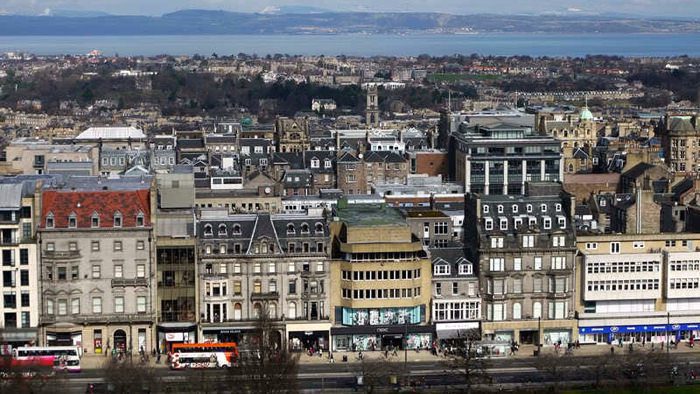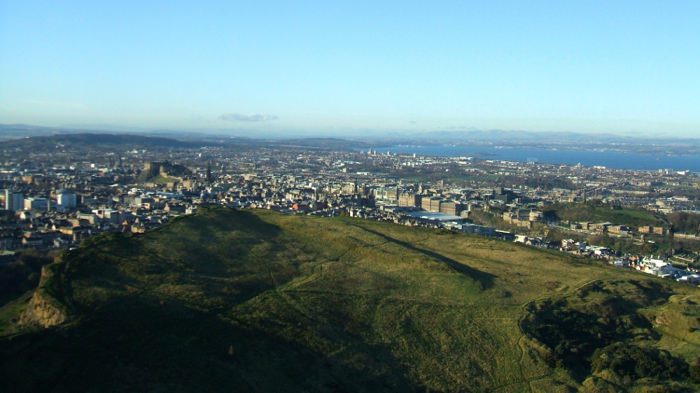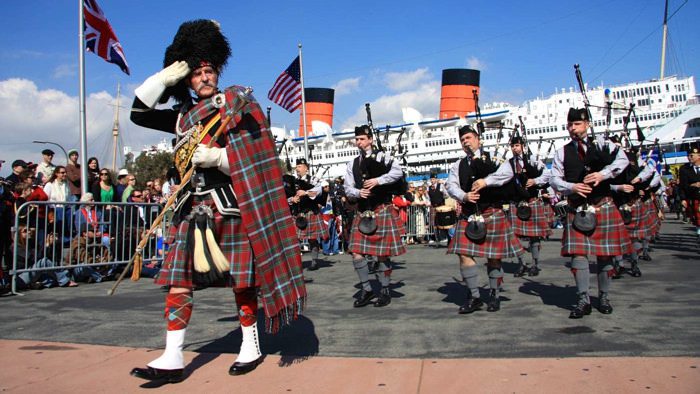Edinburgh, also known as ‘Auld Reekie’ by residents, offers a wide variety of activities and attractions. There’s always something to do in Edinburgh. History lovers will love learning about Edinburgh Castle. Shoppers find an amazing array of Scottish woolens and cashmere goods (among other delights).
Food lovers and cultural enthusiasts also find lots to love about Edinburgh. By taking advantage of a car hire at Edinburgh airport, it’s possible to see the highlights of this UNESCO World Heritage site in two days.
Here are our top five things to see and do in Edinburgh:

There are many historic buildings in Edinburgh and a drive down the Royal Mile (not an actual street name but well known to locals) is one of the best ways to “see” Scottish history. The Old Town area has an authentic medieval street plan! Because some of the ‘closes’ or alleys are only several feet wide it’s important to park the car and experience these paths on foot.
The Edinburgh Castle, built on ancient rock, seems omnipresent in Edinburgh’s skyline, so it’s important to visit if Edinburgh history is of interest. The oldest part of the Castle, St. Margaret’s Chapel, was built by King David the First of Scotland in about 1130 in memory of his mother. The structure was also used by noblemen and religious leaders as a meeting place. Edinburgh Castle was first captured in 1174 by the English (King William the Lion).
About one hundred years later, the English (Edward I) captured the castle again as he demonstrated that the Scottish lands were his feudal subjects. In 1341, the Scots seized the castle from the English. In 1368, King David II built David’s Tower, a defensive structure that first crumbled during 1573’s Land Siege. By 1511, the Great Hall of Edinburgh Castle was finished and the Scottish people rebuilt David’s Tower as a defiant gesture against the English invaders.
King Charles I was the last Scots king to live in Edinburgh Castle (1633). He was executed by Oliver Cromwell’s soldiers in 1650 but the Scottish people never lost the castle to the English again. By 1757, the castle was converted to a prison in order to hold military prisoners of the Seven Years War and the American Revolution.

While touring the historic Royal Mile, make time to see St. Giles Cathedral, Church of Scotland’s General Assembly Hall, Old College (University of Edinburgh), the National Museum of Scotland and the Scottish National Gallery (located between Princes Street and Royal Mile—not to be missed). Art lovers rave about Da Vinci, Raphael, Cezanne, Turner and other famous artists’ works here.
The Scottish Parliament Building stands as a testament to lawmakers’ occasional need for cloak-and-dagger communications: the underground maze of hidden passages is incredible to see!

Although it’s possible to hike on foot to Arthur’s Seat, the “summit” of Edinburgh, many tourists prefer to take a hired car through Queen’s Drive, the main road through Holyrood Park. The park rests of hard volcanic rock that formed about three hundred fifty million years ago. The amazing landscape is a treasure trove: it’s possible to find ten thousand year old arrowheads and view the remains of Iron Age forts. The beautiful indigenous rock was used to build some of Edinburgh’s historic buildings.
Those who appreciate the works of author Irvine Welsh (“Trainspotting”) will enjoy taking the Trainspotting Itinerary. Use online maps and enjoy the sights by car or on foot. The guided tour introduces some of Edinburgh’s most famous sights, too.

The Edinburgh Festival held in the month of August is a very popular attraction so it’s important to book travel arrangements and car hires many months in advance. Other traditional Scottish music and dance festivals, e.g. Beltane Fire, are quite popular. The Edinburgh International Film Festival also attracts large crowds each year.
Counter
101 Countries • 1432 Cities